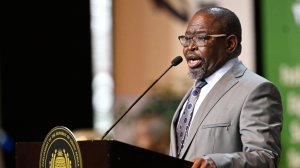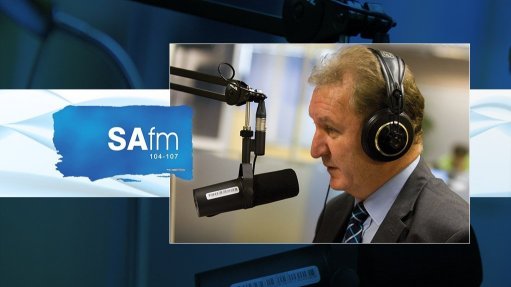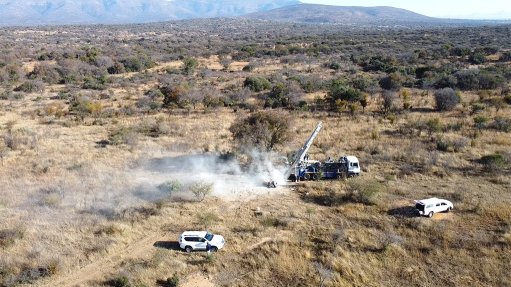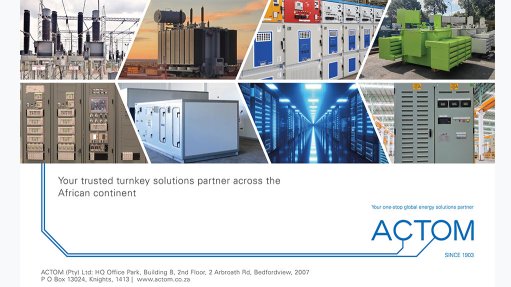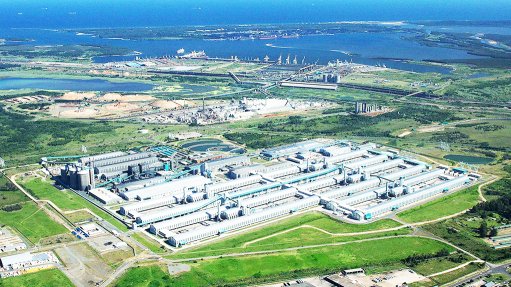Godongwana outlines plans for shifting spending focus towards infrastructure
Finance Minister Enoch Godongwana has outlined several initiatives being undertaken to finally begin shifting the composition of government spending from consumption to capital investment, including plans for a R15-billion infrastructure bond in the coming months.
Such a shift has been signalled for several years, but the Medium-Term Budget Policy Statement (MTBPS) reaffirms that capital payments will be the fastest-growing area of spending over the coming three years, with plans also advancing to accelerate private sector participation in the financing and delivery of infrastructure.
“[W]e are shifting the composition of spending from consumption to investment. Capital payments are the fastest growing expenditure item at 7.5% over the medium-term,” Godongwana said in his address to Parliament.
Gross fixed-capital formation has been in decline as a share of GDP since the 2008 global financial crisis, and currently stands at about 14%, which is below pre-Covid levels and less than half of the 30% targeted by the National Development Plan 2030.
“Government's focus on growth-enhancing infrastructure reforms aims to reverse this systemic underperformance, spurring a virtuous cycle of investment, growth and job creation.
“Providing policy certainty and easing supply-side constraints will boost investor confidence and unlock private investment, which accounts for about 70% of total gross fixed-capital formation,” the MTBPS states.
The National Treasury is preparing a minimum R15-billion infrastructure bond issuance for Budget Facility for Infrastructure (BFI) special window projects, having recently reconfigured the BFI to accommodate four yearly bid windows instead of one.
“The bond forms part of our efforts to introduce dedicated financing instruments that can mobilise cheaper financing to support our infrastructure agenda,” Godongwana adds.
The BFI's bid windows enable public institutions, including national departments, provinces, municipalities and State-owned enterprises, to request funding for part of the cost of a project, as a basis to attract additional private funding.
In the first two quarters since the reconfiguration, 28 submissions with a total capital cost exceeding R379.1-billion were received and approvals were made for projects in the science, water and sanitation and transport and logistics sectors, including two major rail rehabilitation projects for the North Corridor and the Iron Ore Corridor.
Director-general Duncan Pieterse said that, while Transnet had stabilised volumes on the two key corridors, the BFI funding, together with additional private funding, would seek to raise volumes.
Some R937-million and R3.4-billion in adjustments are reflected in adjustments made for non-interest expenditure for the North Corridor and Iron Ore Corridor respectively.
Approvals were also made for the Square Kilometre Array and the Polokwane Regional Waste Water Treatment Works.
It was also announced that a new Infrastructure Finance and Implementation Support Agency would be operational by March 2026.
"The agency will provide project preparation support to supply the BFI pipeline. It will centralise infrastructure finance functions to systematically crowd-in private capital and promote the use of alternative delivery mechanisms."
VISIBILITY OF INFRASTRUCTURE BORROWING
It was also announced that the 2026 Budget will for the first time show borrowing for infrastructure, including for on-budget capital funding, as a separate category of broader government borrowing.
In addition, a consultation paper discussing the design of the long-term instruments for mobilising institutional and retail investor funding for infrastructure investment will be published in early 2026 “to solicit stakeholder views on the reforms and other mechanisms to enhance private infrastructure investment”.
Various initiatives to mobilise private sector participation in the delivery of infrastructure have also been outlined in the MTBPS, including:
- The implementation of regulatory reforms in support of public-private partnerships (PPPs), including the introduction of new guidelines relating to unsolicited bids with provisions made for recoverable development fees, and a commitment to further streamline the PPP manual in 2026, as well as develop sector-specific toolkits in priority sectors and streamline processes to promote PPPs in local government;
- The establishment of partnership offices by the Department of Transport (DoT) and the Department of Water and Sanitation to structure their engagements with the private sector, drawing on lessons from the Renewable Energy Independent Power Producer Procurement Programme. The DoT’s private-sector participation unit housed in the Development Bank of Southern Africa has analysed responses to requests for information on select Transnet rail and port corridors and a request for proposals for the first corridor will be issued by the end of December 2025, with the remainder issued by the first half of 2026; and
- Preparations for the launch in the second half of 2026 of a credit guarantee vehicle, or CGV, developed with the World Bank, to de-risk private investment in critical infrastructure without requiring State guarantees. The vehicle, which will initially be used to support independent transmission projects, will be an independent, non-life insurance entity with an initial capitalisation of $500-million, with development finance institutions owning most of the shares, and government retaining a minority stake.
The new performance-linked incentive grant to assist the country’s eight metros to provide electricity, water, sanitation and waste services has also been highlighted in the MTBPS.
The National Treasury reports that the initial incentive grant totals R54-billion with technical assistance over a six-year period and is expected to unlock R108-billion in total investment by improving revenue and borrowing capacity.
Metros will require clean audit outcomes to access the incentive and will also need to achieve and maintain eight accountability commitments and perform against the indicators set out in their council-approved action plans.
“The incentive grant requires that metros match each R1 of the performance incentive with R1 from improved revenue or own borrowing.”
Article Enquiry
Email Article
Save Article
Feedback
To advertise email advertising@creamermedia.co.za or click here
Press Office
Announcements
What's On
Subscribe to improve your user experience...
Option 1 (equivalent of R125 a month):
Receive a weekly copy of Creamer Media's Engineering News & Mining Weekly magazine
(print copy for those in South Africa and e-magazine for those outside of South Africa)
Receive daily email newsletters
Access to full search results
Access archive of magazine back copies
Access to Projects in Progress
Access to ONE Research Report of your choice in PDF format
Option 2 (equivalent of R375 a month):
All benefits from Option 1
PLUS
Access to Creamer Media's Research Channel Africa for ALL Research Reports, in PDF format, on various industrial and mining sectors
including Electricity; Water; Energy Transition; Hydrogen; Roads, Rail and Ports; Coal; Gold; Platinum; Battery Metals; etc.
Already a subscriber?
Forgotten your password?
Receive weekly copy of Creamer Media's Engineering News & Mining Weekly magazine (print copy for those in South Africa and e-magazine for those outside of South Africa)
➕
Recieve daily email newsletters
➕
Access to full search results
➕
Access archive of magazine back copies
➕
Access to Projects in Progress
➕
Access to ONE Research Report of your choice in PDF format
RESEARCH CHANNEL AFRICA
R4500 (equivalent of R375 a month)
SUBSCRIBEAll benefits from Option 1
➕
Access to Creamer Media's Research Channel Africa for ALL Research Reports on various industrial and mining sectors, in PDF format, including on:
Electricity
➕
Water
➕
Energy Transition
➕
Hydrogen
➕
Roads, Rail and Ports
➕
Coal
➕
Gold
➕
Platinum
➕
Battery Metals
➕
etc.
Receive all benefits from Option 1 or Option 2 delivered to numerous people at your company
➕
Multiple User names and Passwords for simultaneous log-ins
➕
Intranet integration access to all in your organisation




